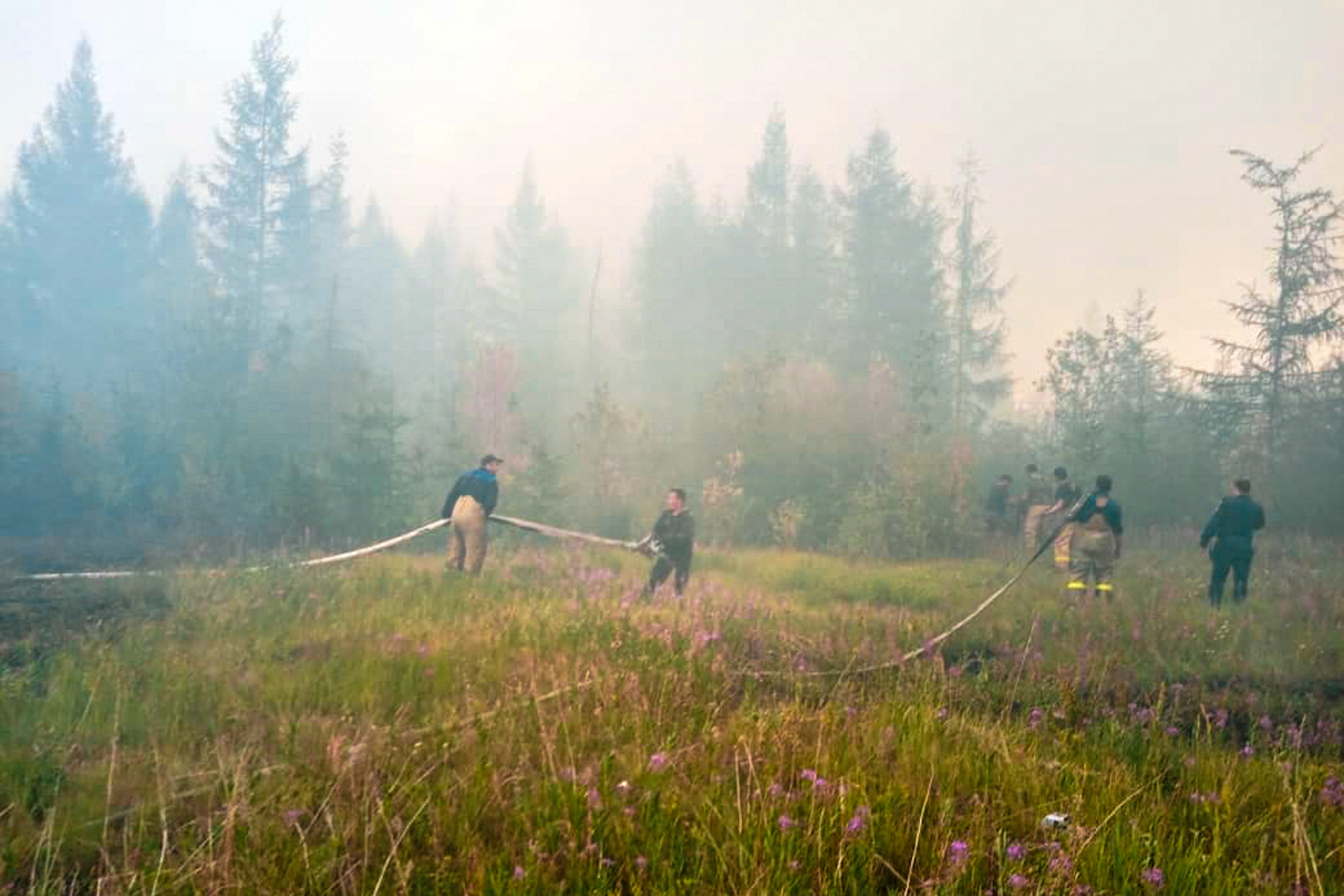Siberia heatwave 'almost impossible' without climate change
Sign up now: Get ST's newsletters delivered to your inbox

The heat in Siberia, with temperatures as high as 38 deg C, has produced conditions like spreading wildfires, ravening mosquitoes, and destabilised permafrost.
PHOTO: AFP
Follow topic:
PARIS (AFP, NYTIMES) - A record-breaking heatwave that has gripped much of Siberia this year would have been "almost impossible" without the influence of man-made climate change, leading experts said on Wednesday (July 15).
The warm period between January and June - which saw temperatures soar as high as 38 deg C - was more than 5 deg C hotter than the historic average, they said.
Using climate data and computer modelling, the international team of climate specialists compared simulations of the heatwave in today's climate with a climate showing no human warming influence.
They found that extreme heat events such as the Siberian hot spell would happen less than once every 80,000 years without human-induced climate change.
Pollution from burning fossil fuels increased the chances of the prolonged heat period by at least a factor of 600, they said.
Mr Andrew Ciavarella, senior detection and attribution scientist at Britain's Met Office, described the findings as "staggering".
"This is further evidence of the extreme temperatures we can expect to see more frequently around the world in a warming climate," he said.
With just 1 deg C of warming since the Industrial Revolution, Earth is already buffeted by record-breaking droughts, wild fires and super storms made more potent by rising sea levels.
The research, conducted by scientists from universities and government meteorological agencies in Germany, the Netherlands, Russia, Switzerland and Britain, employs the techniques of the emerging field of rapid attribution science, which involves computer models and rich troves of data to determine how much of a weather phenomenon might have been caused by human activities that have generated planet-warming greenhouse gases.
The scientific initiative, known as World Weather Attribution, has found human fingerprints on disasters like Australia's bush fires and the drenching rainfall from Hurricane Harvey.
The Siberia research has not yet been submitted for peer review.
The heat in Siberia has produced conditions both hellish and bizarre, with spreading wildfires, ravening mosquitoes, and destabilised permafrost that caused infrastructure damage including a burst fuel tank that released about 140,000 barrels of diesel fuel into a river.
The fires have put more greenhouse gases into the Earth's atmosphere than in any other month in 18 years of data collection, according to one report.
Mr Zeke Hausfather, a climate scientist with The Breakthrough Institute who was not involved with the paper, said that the new research underscores the changes in the frequency of extreme weather events under climate change.
"What was a one-in-100-year event a century ago, would be a one-in-20- or a one-in-10-year event now," he said.
While the Siberian heat is unusual today, if high greenhouse gas emissions persist, by the end of the century this year's horror story could be "an average summer in Siberia", he said.

